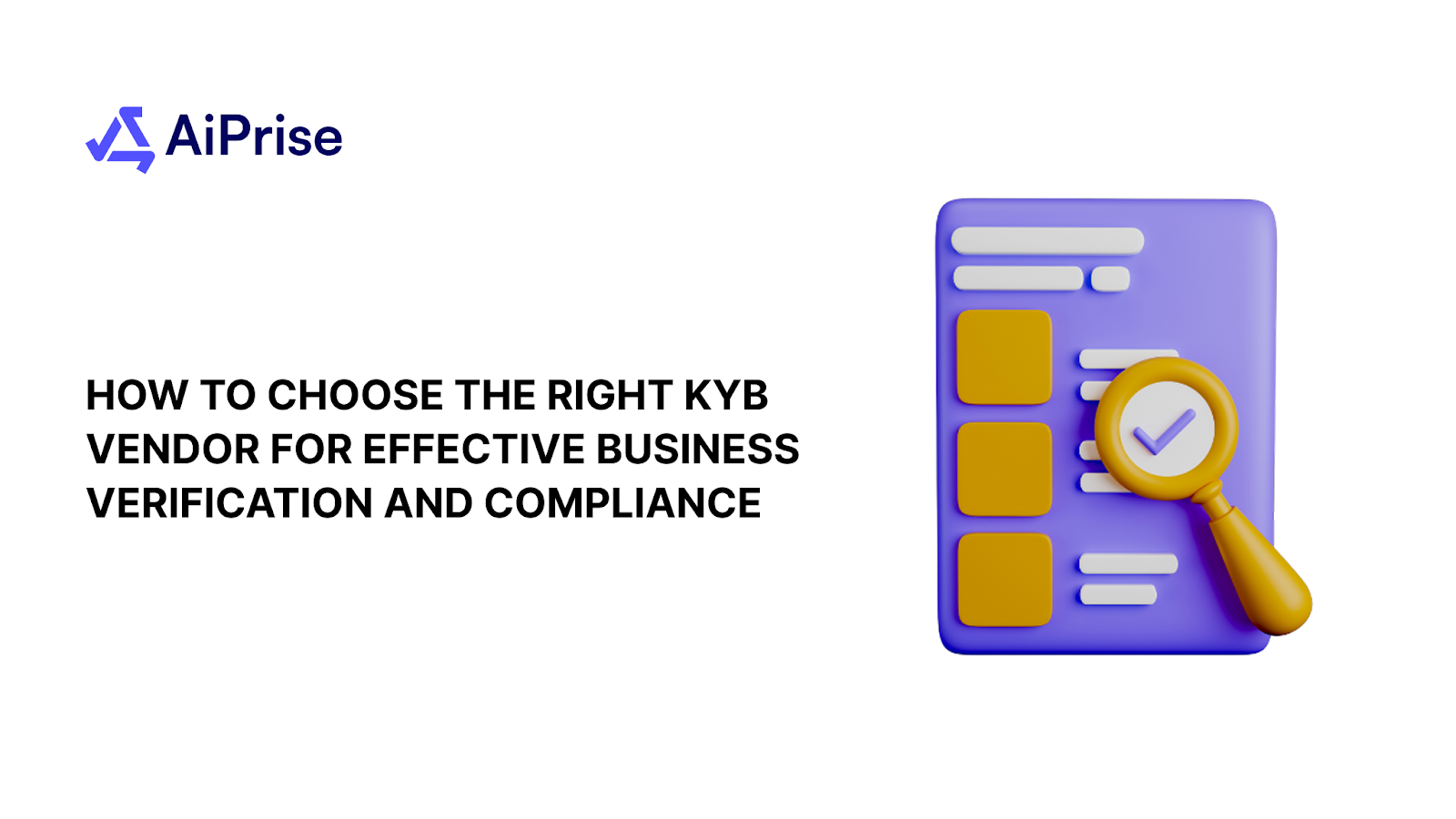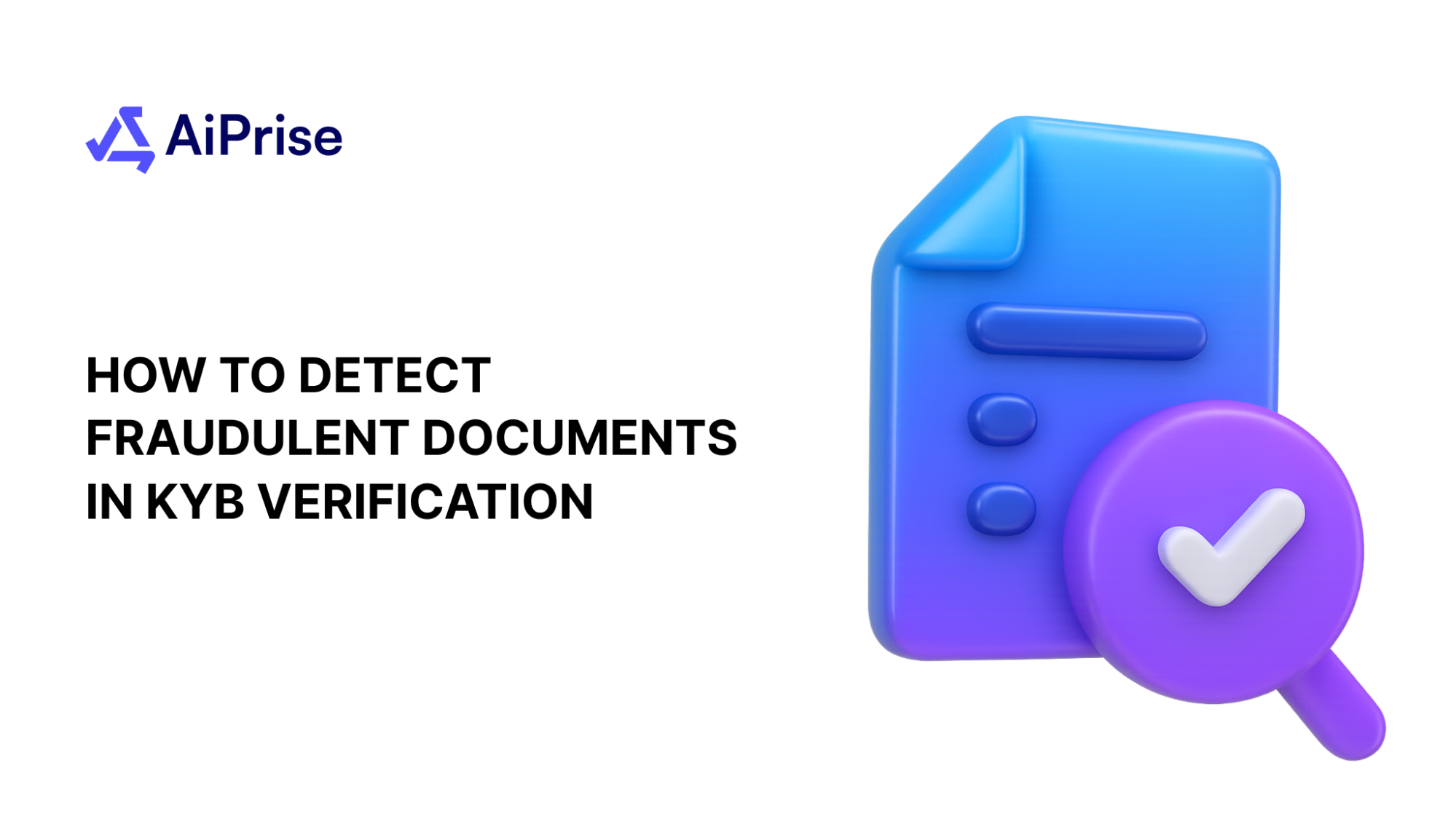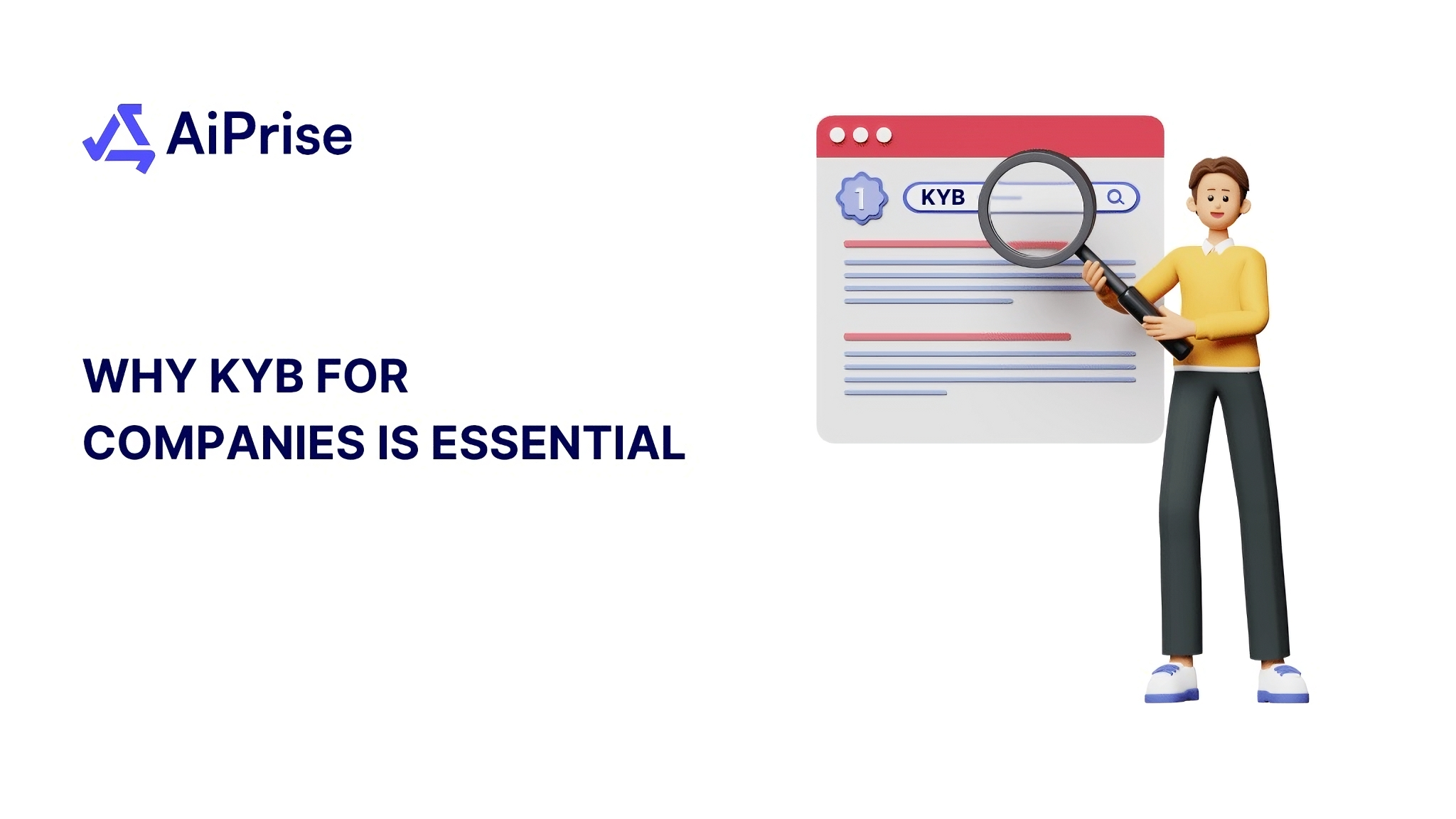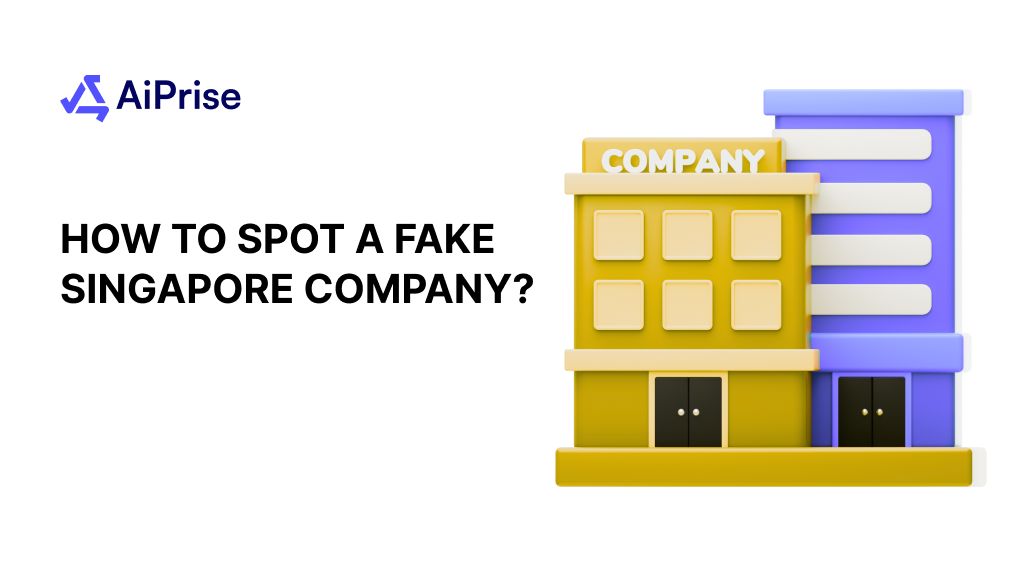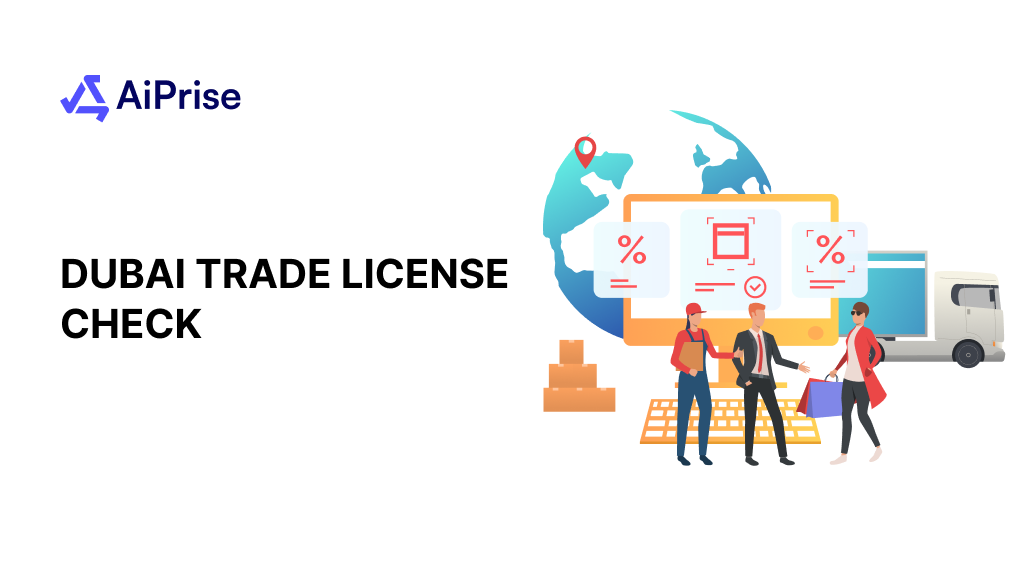AiPrise
11 min read
October 29, 2025
Understanding KYB Risk Factors and Assessment

Key Takeaways










KYB risk assessment helps you spot risky businesses before they become losses. It turns scattered signals into clear decisions. You score what matters and document why. The result is faster onboarding with fewer surprises. Your team stays compliant and audit-ready.
This blog will help you understand the KYB risk factors and assessment, and give you practical knowledge to build a perfect risk scoring model that fits your business.
Key Takeaways
- KYB risk assessment evaluates business legitimacy, ownership, financial health, online signals, and jurisdiction risks to prevent fraud and ensure compliance.
- A single red flag does not always mean rejection; risks should be cross-checked, contextualized, and scored using a structured model.
- Key categories include legitimacy, ownership and control, financial history, operational footprint, geography, and device/behavioral signals.
- A strong KYB workflow combines data intake, entity resolution, scoring, decisioning, and ongoing monitoring to stay audit-ready.
- Continuous monitoring and tools like AiPrise streamline verification, reduce manual work, and keep compliance teams proactive.
What are KYB Risk Factors and Assessment?
KYB risk factors are the signals that reveal whether a business is legitimate, compliant, or potentially risky. Each factor highlights a different dimension of trust, fraud risk, or regulatory exposure.
On the other hand, KYB risk assessment is the process of rating a business for compliance and fraud risk. It turns registry, ownership, and behavior signals into a clear risk score.
Teams use KYB risk factors and assessments to decide whether to onboard, review, or decline a company. It also creates an audit trail for regulators.
KYB focuses on entities, not consumers. You look at the company, its owners, and its controllers. KYC, by contrast, verifies an individual’s identity and assesses their associated risk.
Also Read: Understanding User Identity Verification Process
Both matter, but the subjects differ. The goal is simple: know who you are doing business with, and why the decision is safe.
How KYB Risk Assessment is Different from KYC
Both KYB and KYC are pillars of AML compliance, but they apply to different areas. KYC checks individuals to prevent fraud and identity misuse, while KYB assesses businesses and their owners to stop shell entities, money laundering, and high-risk partnerships.
Here’s a clear comparison:
The verification in the USA started to combine state registries, federal tax IDs, government databases, and digital monitoring to ensure compliance and protect against fraud.
Historical Evolution of Verification in the USA
Business verification in the United States has its roots in early 20th-century regulatory efforts, when corporate registration and tax identification systems were formalized. Over time, corporate registries at the state level and requirements for articles of incorporation became standard.
This shifted significantly with the passage of the Bank Secrecy Act (BSA) in 1970 and later the USA PATRIOT Act in 2001. It introduced strict Know Your Customer (KYC) and anti-money laundering (AML) mandates.
These frameworks expanded into Know Your Business (KYB) requirements, emphasizing the need to identify Ultimate Beneficial Owners (UBOs) and screen against sanctions. This system ensures that businesses operated with legal recognition and accountability.
However, a structured risk assessment only works if the right signals are on the table, and these categories define where to start scoring.
Risk Signal Categories You Should Score
Risk signals are the evidence points that shape a KYB risk assessment. One signal alone does not define risk, but combined and cross-checked, they reveal whether a business is credible or risky.
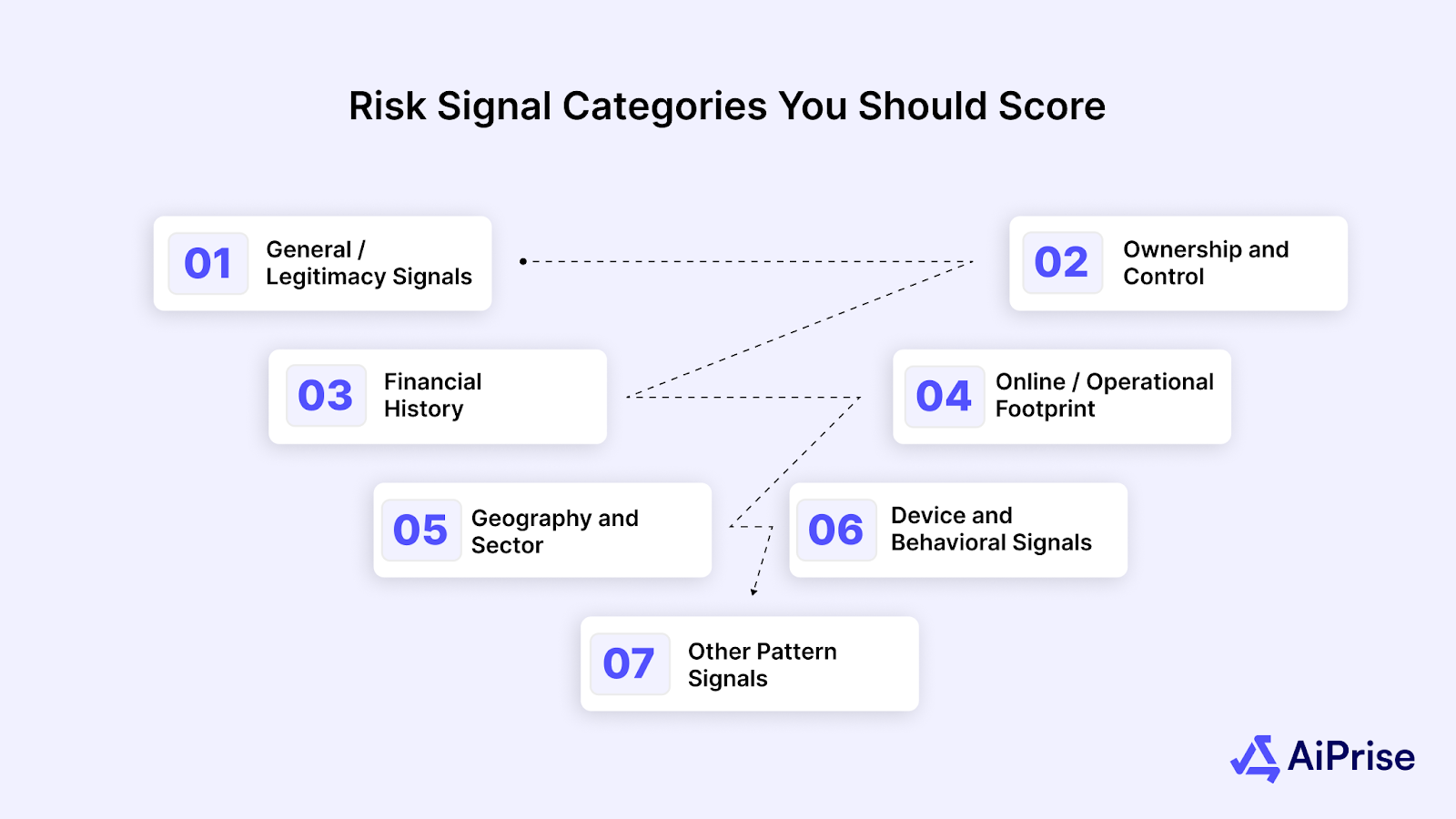
For example, if a registered address matches government filings but not the website, this inconsistency may indicate hidden issues.
1. General / Legitimacy Signals
These signals confirm if a business legally exists and operates as claimed. They come directly from registries, regulators, and official records.
- Tax IDs: An EIN or TIN proves IRS registration in the US. Invalid or mismatched IDs raise questions about legitimacy.
- Corporate status: Active vs. dissolved status shows whether the entity can legally operate. A revoked status is a red flag.
- Registration number: This unique identifier should match official registries. A mismatch can mean fraudulent registration.
- Sanctions and watchlists: Entities or owners flagged on OFAC or UN lists pose compliance and reputational risks.
- Adverse media: Reliable negative press tied to fraud, corruption, or enforcement points to higher risk.
- Founding docs: Articles of incorporation or certificates confirm the entity’s legal creation and structure.
- VAT number (EU): EU companies without valid VAT numbers may not be authorized for cross-border activity.
- Address type: A genuine commercial office signals legitimacy; mail drops or virtual offices can mask shell firms.
- Entity type: Identifying whether it’s an LLC, sole prop, or corporation clarifies ownership rules and liabilities.
2. Ownership and Control
This category shows who truly runs the business and whether those individuals create compliance risks.
- UBO identification and KYC pass: Every Ultimate Beneficial Owner should be disclosed and verified with government-issued ID.
- Association check: Validates whether listed UBOs or officers are genuinely linked to the company.
- PEP exposure: Politically Exposed Persons bring higher bribery and corruption risks.
- Nominee directors: Hidden or layered ownership chains can conceal true controllers and complicate compliance.
3. Financial History
Financial records highlight a company’s stability and ability to meet obligations, making them central to risk scoring.
- Third-party transaction presence: Records in payment networks confirm that a business is active and real.
- Liens, judgments, bankruptcies: Legal claims or insolvency filings suggest poor financial health.
- Business credit file: A low score or downward trend may signal default risk or instability.
- Public listing status: Exchange-listed companies undergo strict disclosure checks, boosting legitimacy.
- Reputation signals: BBB ratings and CFPB complaints show how a company treats customers.
- Nonprofit status validation: Verifying 501(c)(3) status in the US ensures tax-exempt claims are genuine.
4. Online / Operational Footprint
Digital presence provides supporting evidence that a business is real and consistent with its claims.
- Email intelligence: Domain alignment with the website, age, and deliverability confirm business maturity.
- Social accounts: Active, consistent profiles fit expected business activity; absent accounts may be a red flag.
- Website checks: Domain age, SSL certificates, and presence of policy pages show professional credibility.
5. Geography and Sector
Location and industry shape inherent risk, especially in regulated or cash-heavy environments.
- Jurisdiction risk: Entities incorporated in sanctioned or weakly regulated regions carry higher AML risk.
- Industry classification: MCC/NAICS codes should match declared business activities. Misalignment may signal misrepresentation.
- Sector exposure: Cash-intensive or restricted industries (e.g., gambling, crypto, adult services) require enhanced checks.
6. Device and Behavioral Signals
User interaction data reveals fraud attempts that may slip past paper-based checks.
- IP geolocation consistency: IP addresses should align with declared business locations. Frequent mismatches signal fraud.
- Device fingerprint stability: Frequent changes in browser/device traits suggest bots or emulators.
- Email and phone verification: Age, carrier data, and ownership checks confirm communication channels are genuine.
7. Other Pattern Signals
Cross-entity data can expose hidden fraud rings or misrepresentation across multiple businesses.
- Shared identifiers: Repeated use of the same address, phone, or UBO across entities may indicate fraud networks.
- Firmographic fit: Stated employee count or revenue should align with credible third-party data; big gaps suggest misrepresentation.
Also Read: The Biggest Money Laundering Cases in History
Spotting signals is only half the work; the real thing is using them into a repeatable KYB risk assessment workflow that teams can trust.
How to Build a KYB Risk Assessment Workflow
A KYB risk assessment workflow is the structured path that turns raw data into actionable compliance decisions. It connects collection, verification, scoring, and monitoring into a single loop.
Done right, it gives compliance teams speed, accuracy, and audit readiness without drowning them in manual work.

Data Intake
The first step is gathering authoritative information. This includes pulling records from business registries, collecting incorporation documents, and obtaining attestations for Ultimate Beneficial Owners (UBOs). Using official sources reduces guesswork and ensures your assessment starts with verified inputs.
Entity Resolution
Businesses often appear in multiple databases with slight variations in names, addresses, or IDs. Entity resolution consolidates these records, removes duplicates, and builds a single “golden record.” This prevents fragmented data from distorting your risk assessment.
Risk Scoring
Each signal, such as a sanctions hit, negative media, or missing tax ID—should carry a weight. Scores determine whether an entity is low, medium, or high risk. Clear thresholds also dictate when to apply Enhanced Due Diligence (EDD), ensuring consistency across reviews.
Decisioning and Audit Trail
A structured workflow routes cases to the right reviewers, applies escalation for high-risk entities, and records final decisions. Maintaining an audit trail with reviewer notes, document copies, and watch list results is critical for compliance examinations.
Ongoing Monitoring
KYB is not a one-time exercise. Continuous monitoring catches changes in ownership, new sanctions hits, or emerging adverse media. Periodic reverification keeps records fresh and helps detect evolving risks before they cause losses.
Checklist
Regulators and auditors expect documented proof. Keep copies of business registrations, UBO attestations, sanction screening logs, adverse media reports, scoring outputs, and reviewer notes. Organized retention demonstrates compliance and protects against penalties.
A strong workflow gives structure, but the real advantage comes from knowing how much to automate and how much to review manually. That’s where best practice balance comes in.
Best Practice Balance
An effective KYB risk assessment is not about going fully manual or fully automated. It’s about finding the right balance between speed, accuracy, and oversight. The points below outline where automation works best.
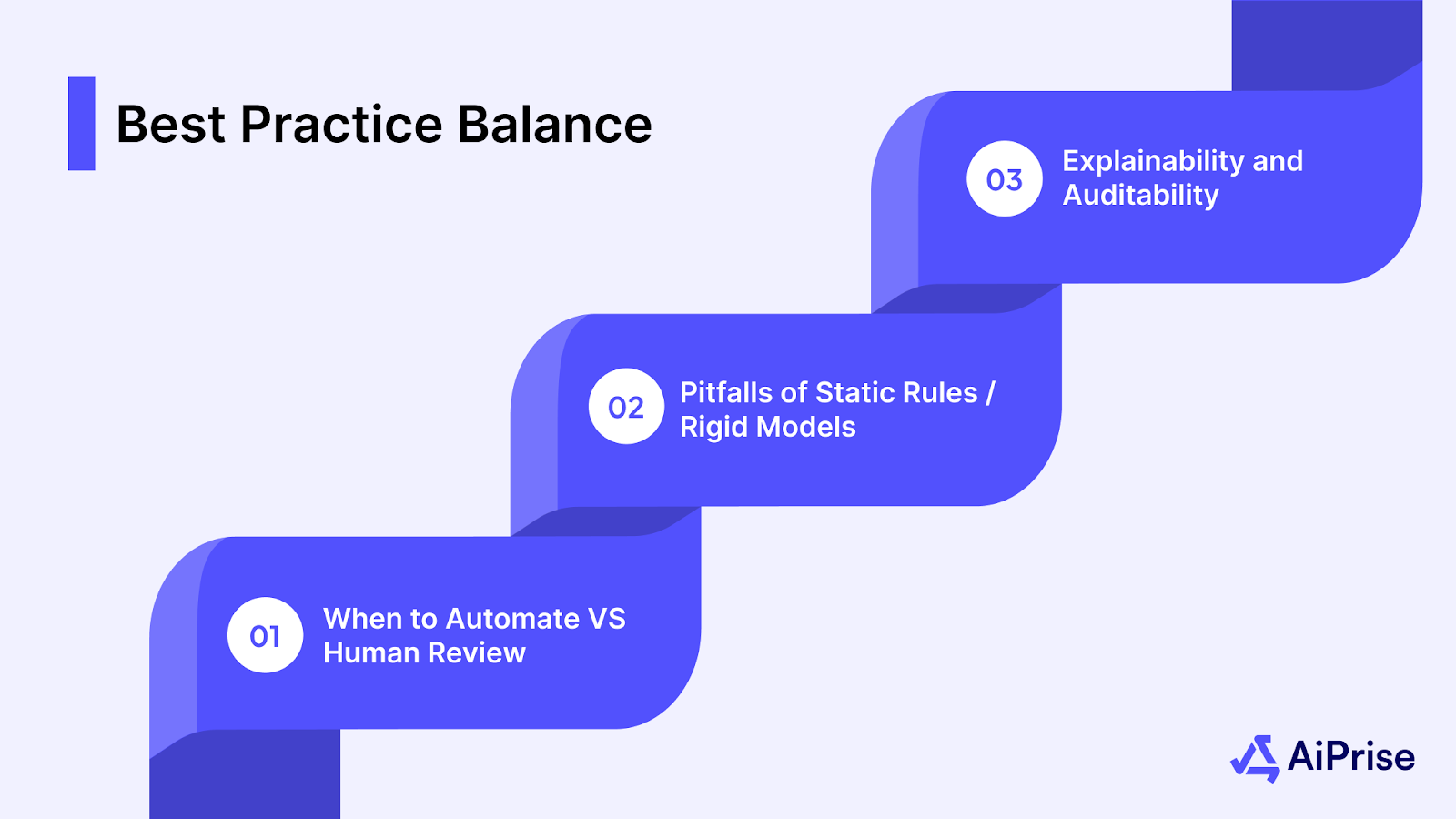
When to Automate VS Human Review
Automation is ideal for repetitive, data-heavy checks like registry pulls, sanctions screening, or address validation. These tasks scale better when machines handle them. Human review becomes essential when signals conflict, when ownership structures are unusually complex, or when risk levels are high enough to require enhanced due diligence.
Pitfalls of Static Rules / Rigid Models
Relying only on hard-coded rules creates blind spots. Fraud tactics evolve, registries update, and new risks emerge. Static models may flag too many false positives or miss subtle patterns.
A flexible risk model with periodic backtesting helps ensure your system adapts to change rather than becoming outdated.
Explainability and Auditability
Regulators and auditors expect not just results but proof of how those results were reached. Every score and decision should be traceable back to the signals, rules, and human judgments behind it.
Explainable models and transparent audit logs allow compliance teams to defend their processes and avoid penalties.
Also Read: Understanding Digital Identity and How It Works
Struggling with blind spots in KYB because online signals are thin and inconsistent? AiPrise builds a complete risk profile from website, domain, and social footprints. See how it closes gaps and speeds decisions.
AiPrise’s KYB Risk Capability
KYB risk needs more than basic checks. AiPrise enhances the speed, compliance and precision of your KYB process. This platform offers features to help you spot risks early and act timely.
- Proof of Address: The system extracts address details, checks document freshness, and runs tamper analysis. This confirms location and reduces false positives in residency claims.
- Government Verifications: AiPrise validates registration, licenses, and tax IDs against official sources. This proves legal existence and strengthens business legitimacy checks.
- Watchlist Screening: Entities and UBOs are screened against sanctions, PEPs, and adverse media in real time. Hits are flagged with evidence so reviewers can act fast.
- Document Insights: AI parses corporate filings and IDs to pull names, numbers, dates, and roles. Clean fields flow into scoring and save manual effort.
- Case Management: Reviews, notes, escalations, and outcomes live in one place. This creates a defensible audit trail and shortens handling time.
- Workflows: You can orchestrate intake, UBO attestations, scoring, and EDD steps end to end. Rules keep actions consistent across teams and products.
- Onboarding SDK: A branded form collects accurate data and documents with less friction. Better inputs mean fewer rechecks and faster decisions.
- One Click KYC: Instant KYC verifies UBO identities in seconds. This reduces back-and-forth and speeds KYB completion.
- Reverification: Triggers fire on ownership changes, new sanctions, or risky events. Continuous checks keep profiles current after onboarding.
- Online Presence Analysis: Website, domain, and social signals are analyzed for business fit and authenticity. Mismatches surface early for targeted review.
- Dynamic Risk Scoring: Weighted models convert signals into clear risk bands with mapped actions. You control thresholds and can backtest changes.
- Ongoing Monitoring: Filings, sanctions, and media are watched for material changes. Alerts help your team intervene before risk turns into loss.
Conclusion
KYB risk assessment is about more than collecting data. You need to track legitimacy, ownership, financial history, online presence, and even behavioral signals. A structured workflow ensures these risk factors are scored, documented, and ready for audit.
But risk is never static. Continuous monitoring keeps you updated on ownership changes, new sanctions, and fresh risk signals. AiPrise helps you manage these moving parts with speed and accuracy.
AiPrise enables companies to onboard faster, reduce compliance costs, and manage risks with confidence across global markets. By unifying essential KYB checks into one platform, it helps compliance teams move from fragmented processes to a streamlined, proactive system.
Book A Demo to see how AiPrise simplifies KYB for your business.
FAQs
Q1. What is a KYB risk assessment?
A1. It’s the process of scoring business entities against risk signals like ownership, financial health, and jurisdiction. The goal is to ensure compliance and avoid fraudulent or high-risk partners.
Q2. Can a business with red flags still be onboarded?
A2. Yes, if the risks are acceptable and documented with enhanced due diligence. Not all red flags mean rejection; context matters.
Q3. How often should a KYB risk score be refreshed?
A3. Scores should be refreshed continuously or at set intervals, especially when ownership, filings, or sanctions lists change.
Q4. Are all signals equally weighted?
A4. No, each signal carries different importance. For example, a sanctions hit is more critical than a missing social media profile.
Q5. What checks differ across jurisdictions?
A5. Tax IDs, registry coverage, and UBO disclosure rules vary by country. Always align checks with the local compliance framework.
You might want to read these...

Aiprise has helped streamline our KYB (Know Your Business) flow in 100+ countries. No other tool comes close.





Speed Up Your Compliance by 10x
Automate your compliance processes with AiPrise and focus on growing your business.








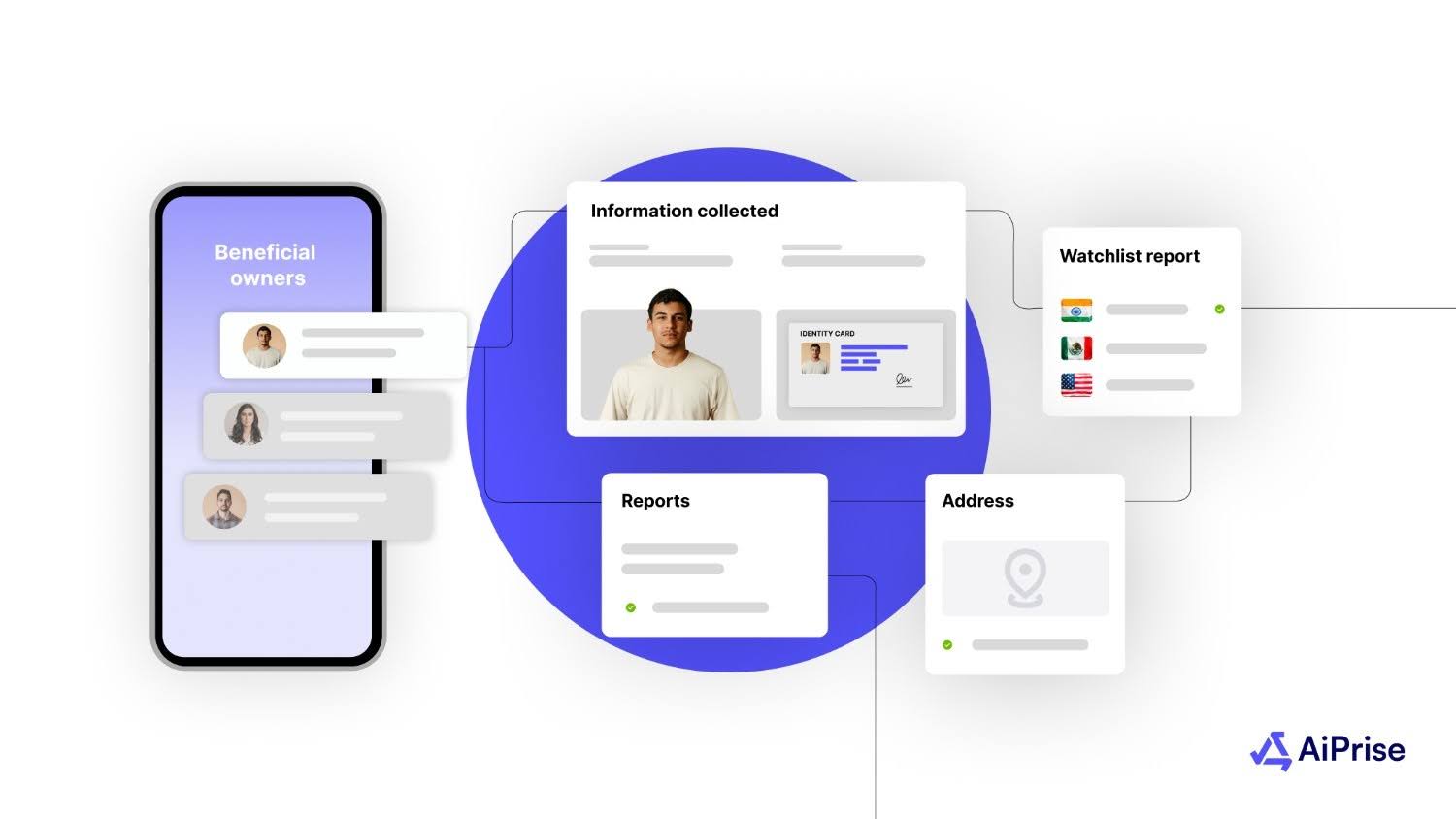
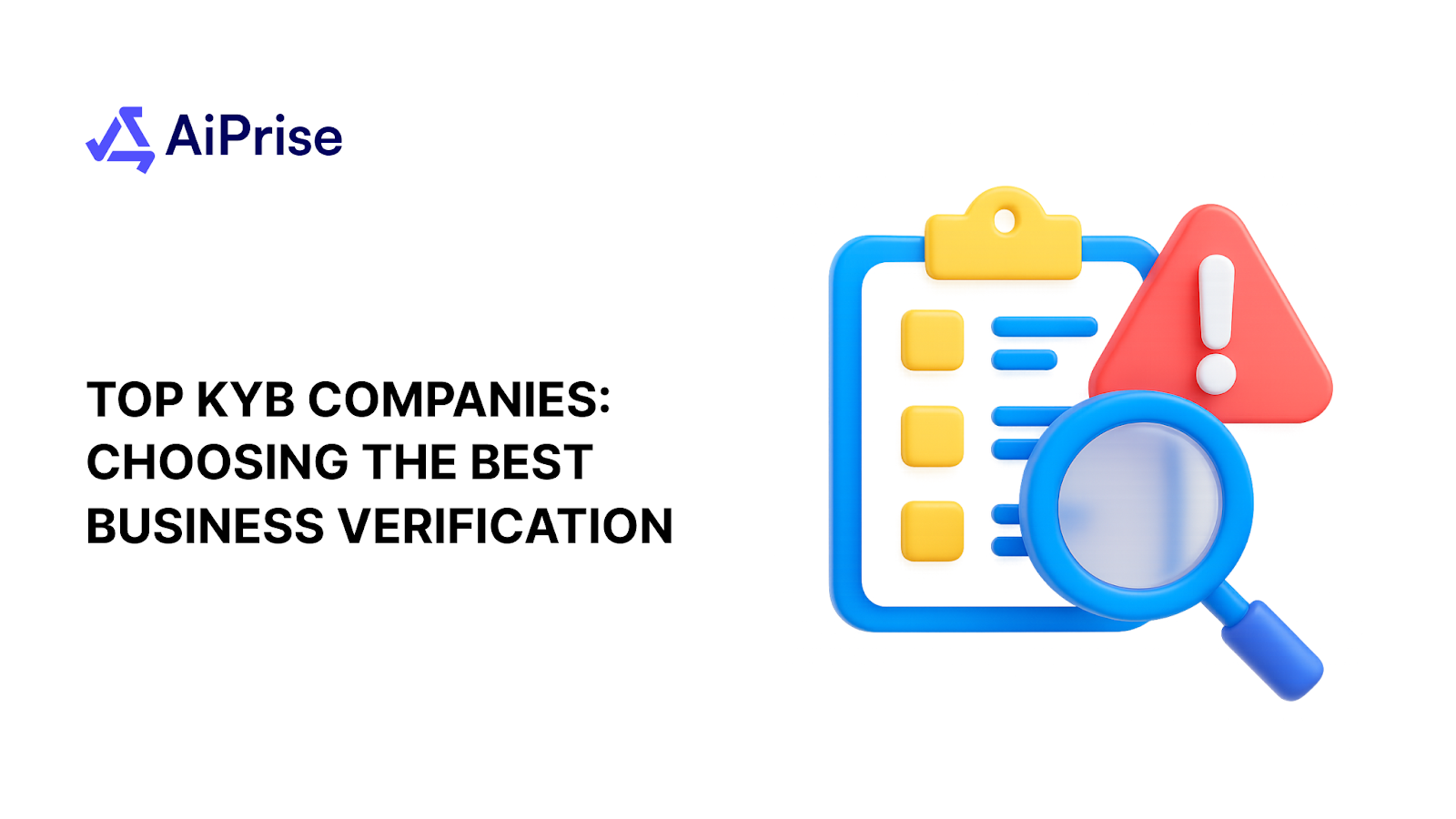
%20Can%20Improve%20Your%20Compliance%20Strategy.png)
